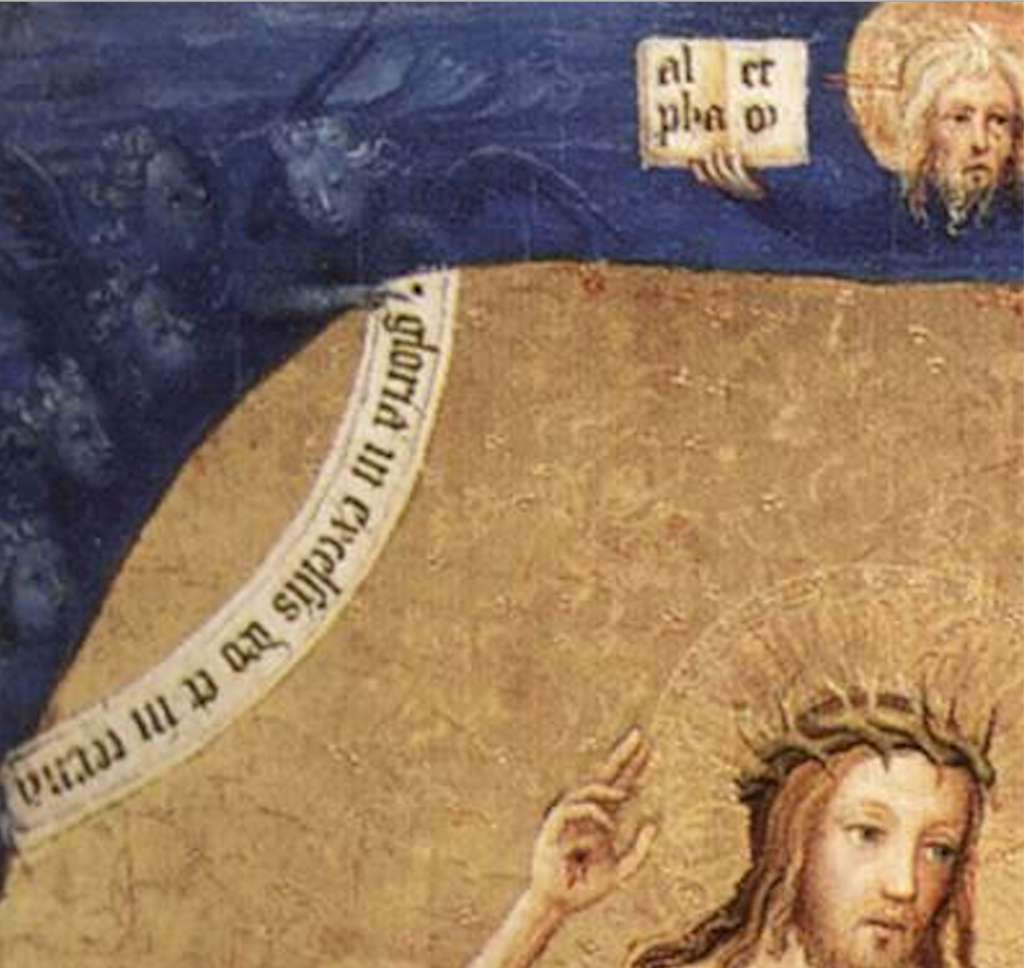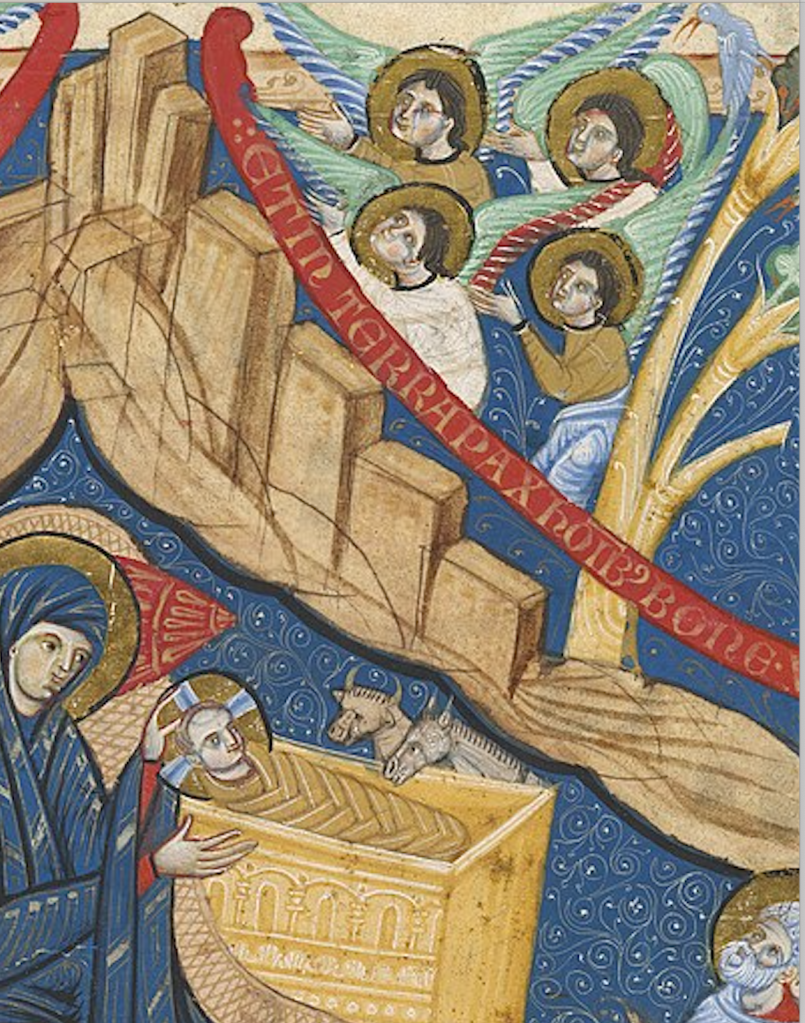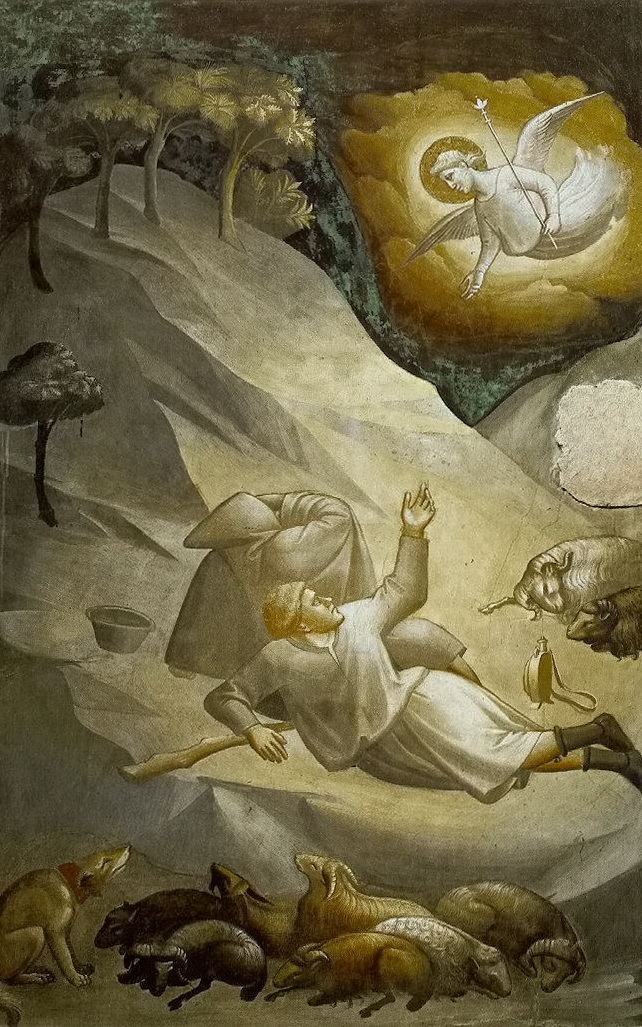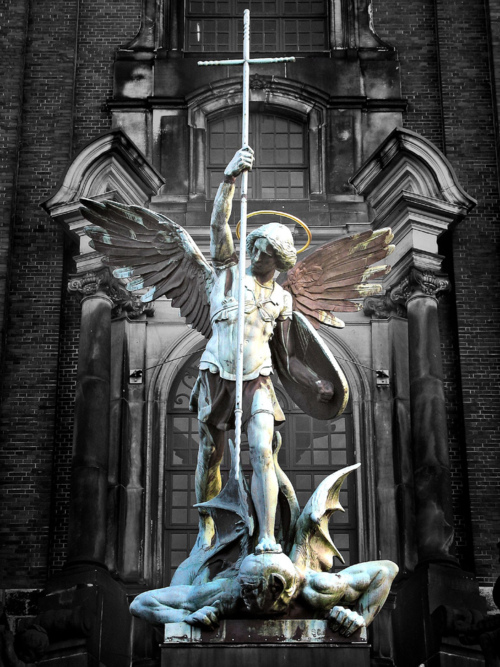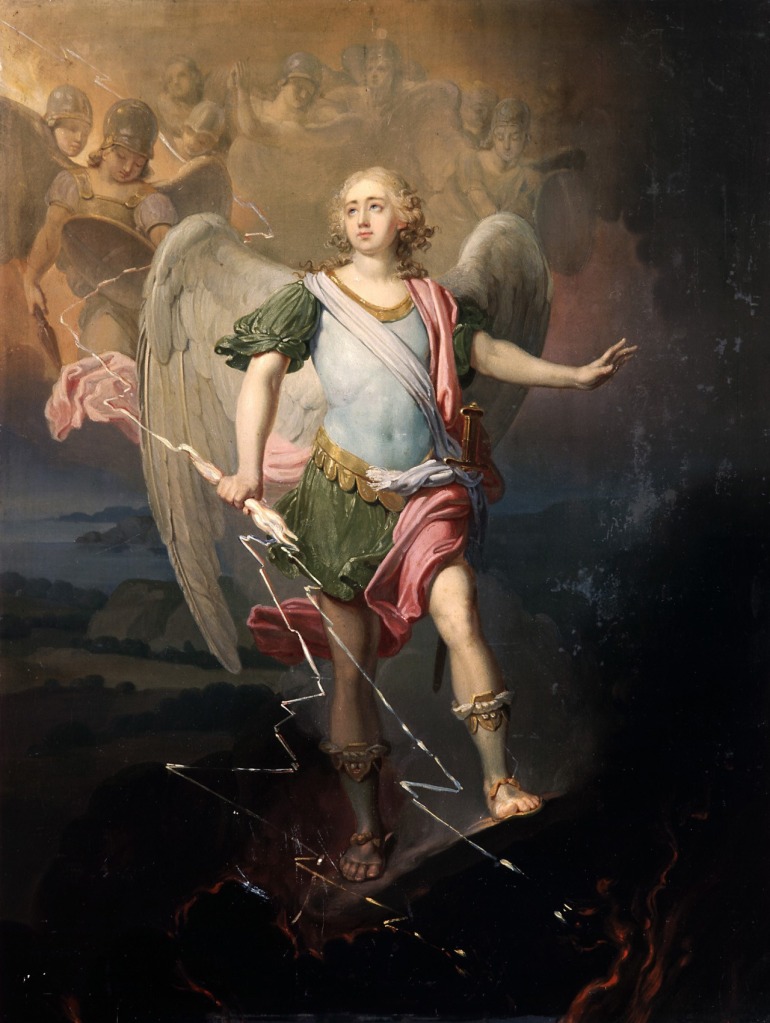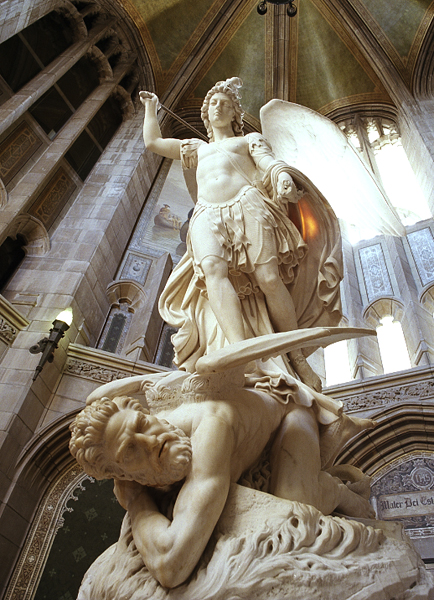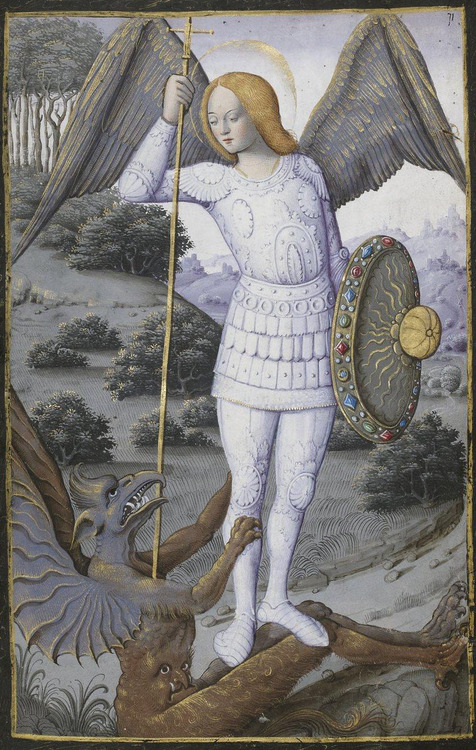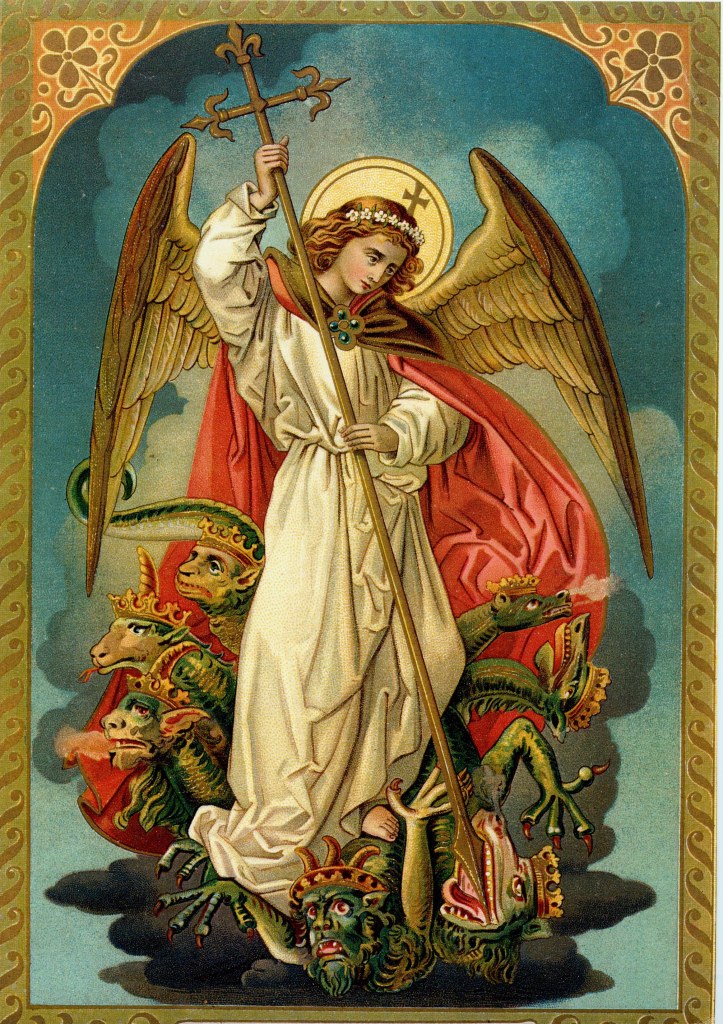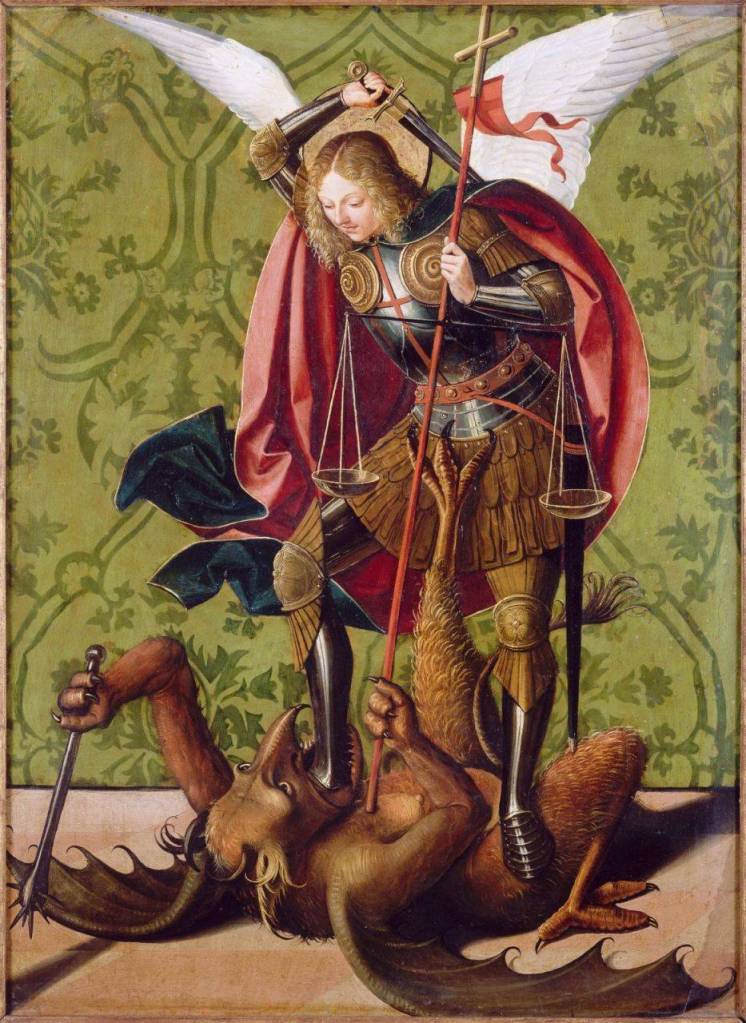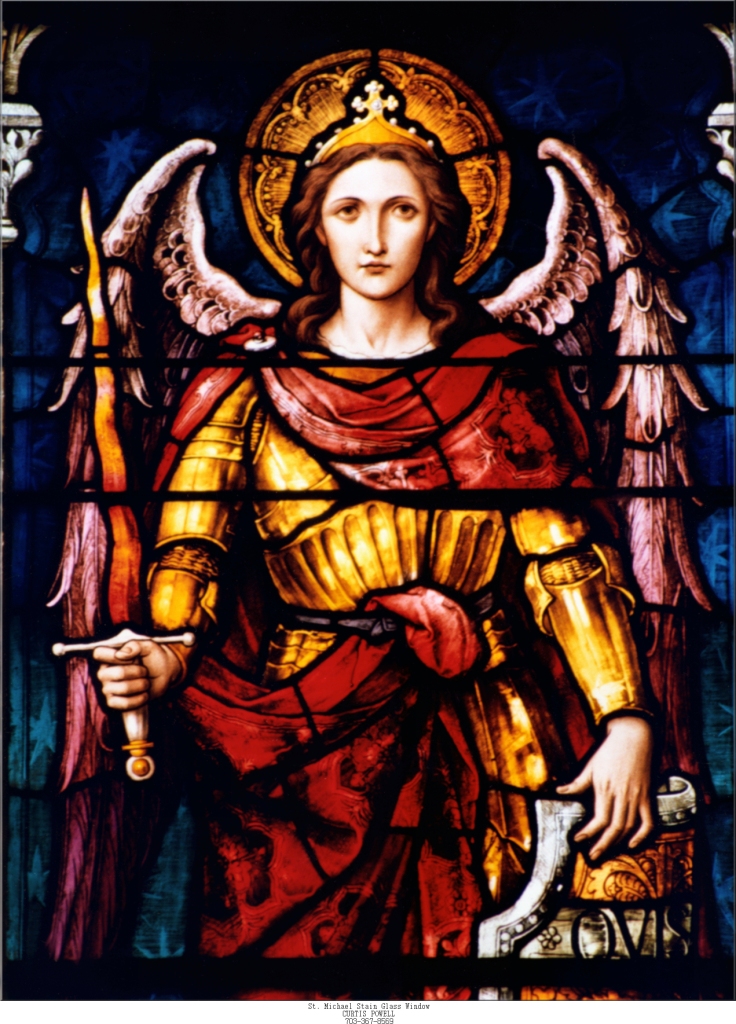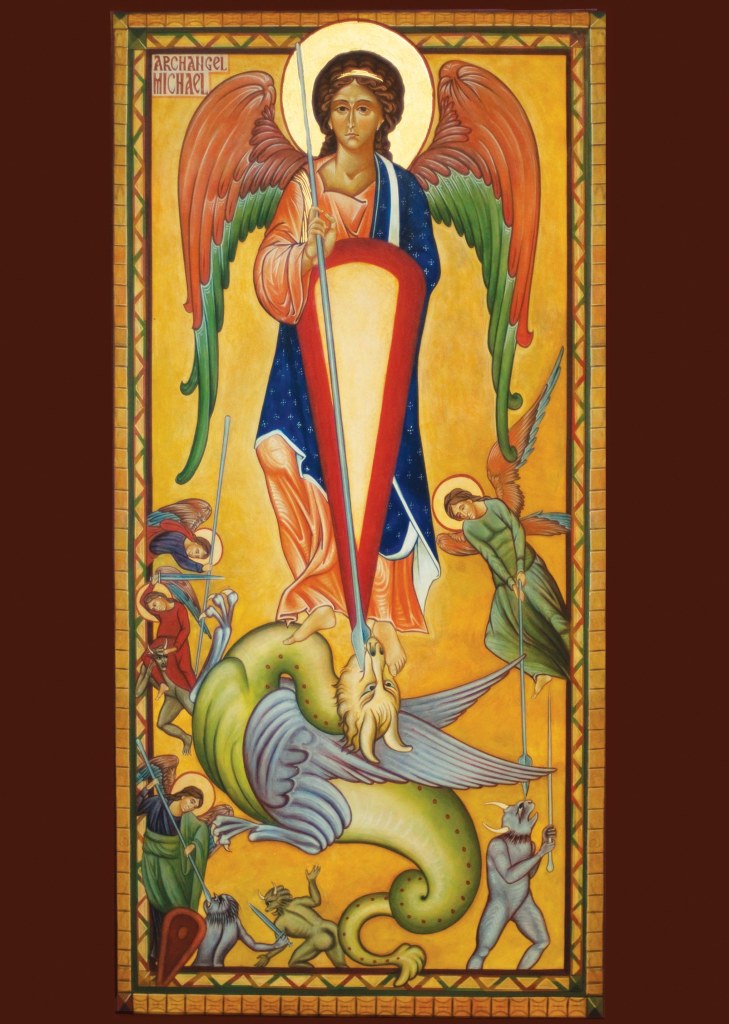Look at the delicate dance of these not-so-foreign words, from an Anglo-Norman text. The language is a playful blend of what are now English and French. It really is near enough to be comprehensible, if one already knows the subject matter. These variations on languages remind me of the ornament of clothing with gold, lace and precious stones – something that takes the ordinary and makes it extraordinary.
Here’s a small example, from the site anglo-norman.net, which includes a dictionary and a variety of texts for your enjoyment.
The first text is: “a 14th century copy of a 13th century Anglo-Norman MS. containing the Apocalypse of St. John with a commentary, followed by a dissertation on The Seven Deadly Sins. This copy, which I have called The Giffard Manuscript, exhibits the Apocalypse and Commentary in rhyming couplets…”
Rhyming couplets? Behold:
1520 ‘E li secund aungele suna sa busine,
E ausi come un grant munt se encline
Ardaunt de fu e est envé
Deske en la mer e tresbusché,
1524 E la tierce part de la mer est fete en pou de hure
Saunc, e muert la tierce part de la creature
Ke aveit alme en la mer,
E la tierce part des niefs i vi joe periller.’
1528 Le businer al secund aungele e le sun
Signefie ke la grant predicaciun
Ke fu primes a Jueus par les apostles fete,
Si en est pus de eus as paens retrete.
1532 Çoe ke li grant muntz ardaunt
Est envee en la mer parfunde e graunt
Signefie ke li deables orguillus,
Ki est enreveres e ennuuius,
1536 Aveit leissur de nuire en ceste munde,
Ke est signefié par la mer ke surunde. (Source)
Which one might be able to see is a restating of the Scripture: “And the second angel sounded the trumpet: and as it were a great mountain, burning with fire, was cast into the sea, and the third part of the sea became blood: And the third part of those creatures died, which had life in the sea, and the third part of the ships was destroyed.” (Revelations 8:8-9, from the Douay-Rheims translation, available here among other places.) And this is then followed by an interpretation, in rhyme, that goes on for a few stanzas before the next section of Scripture is recited. Especially in that it is rhymed, this seems a text intended for recitation out loud.
Reading this, and reading the introductory material (at the top of the same page) left me a bit in awe. I thought about the attention to detail and creativity and flourishing in the all the arts that have sprung from our faith over the centuries. Which also led me to a sorrow that I will comment in another post.









